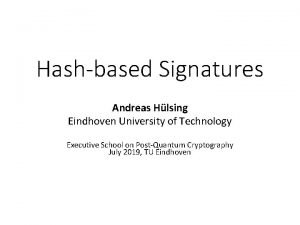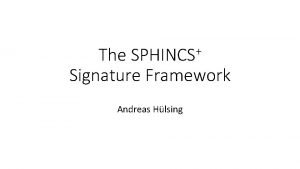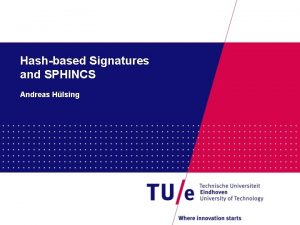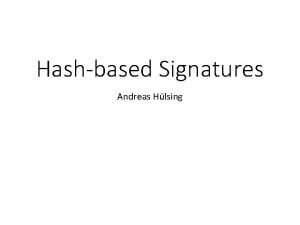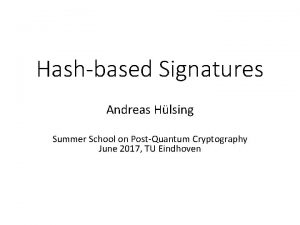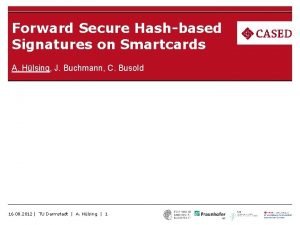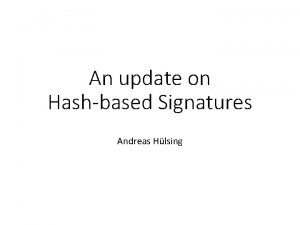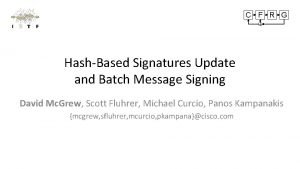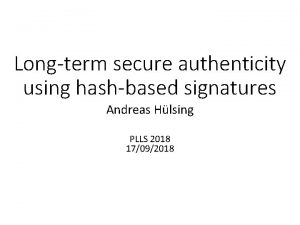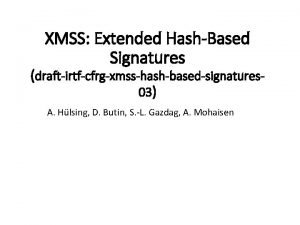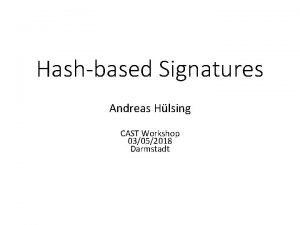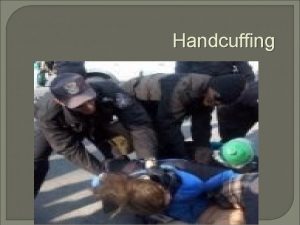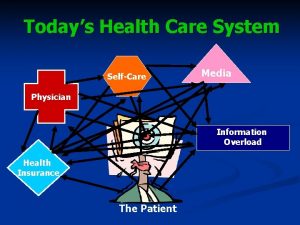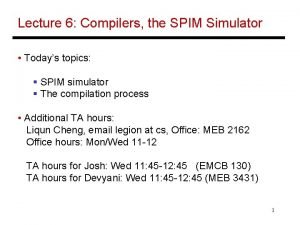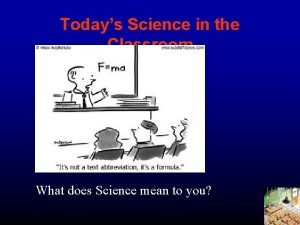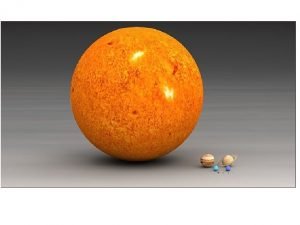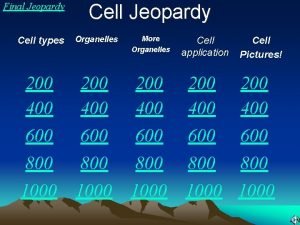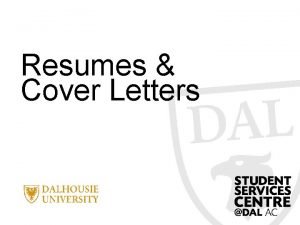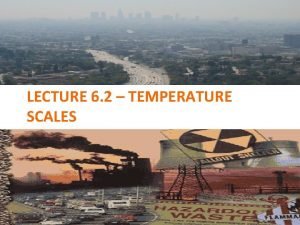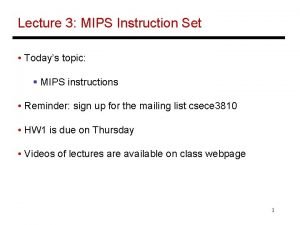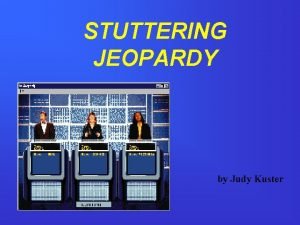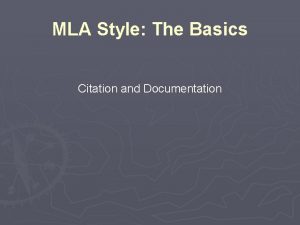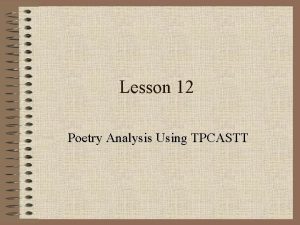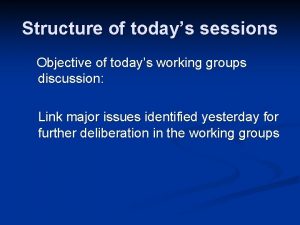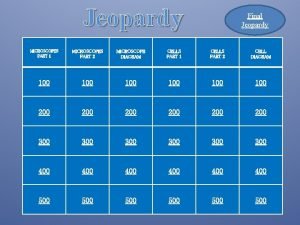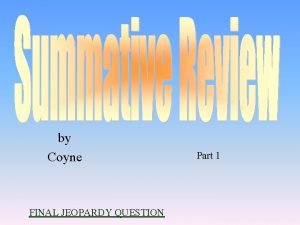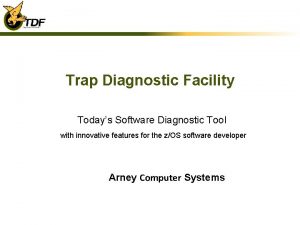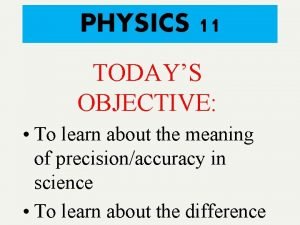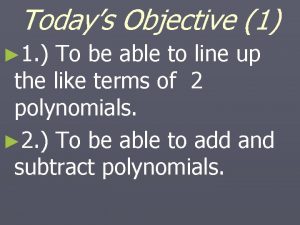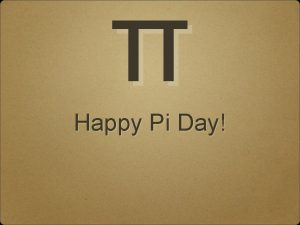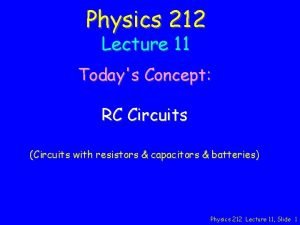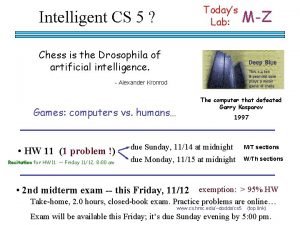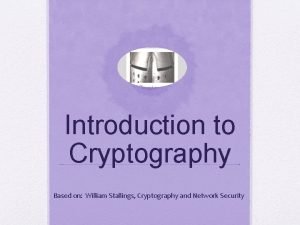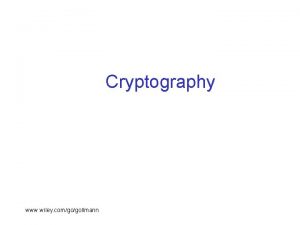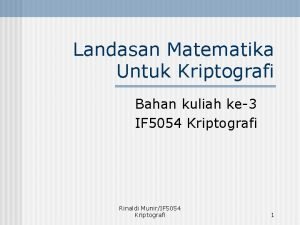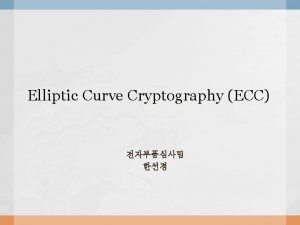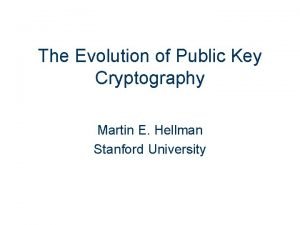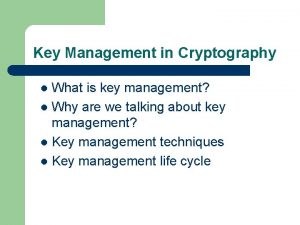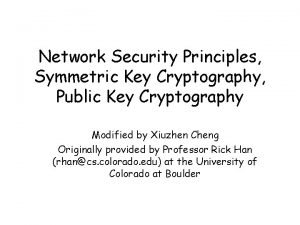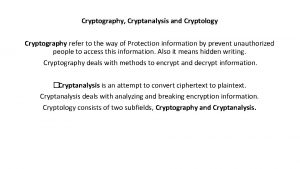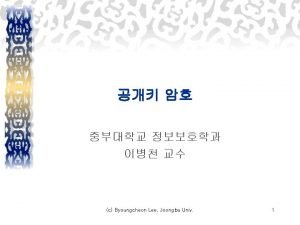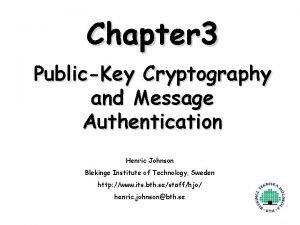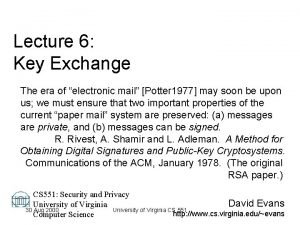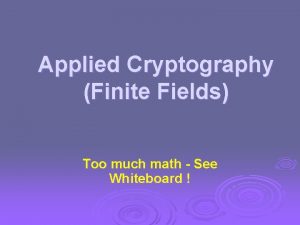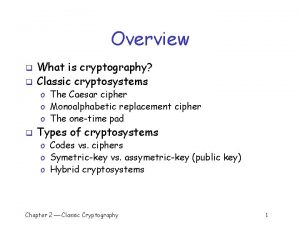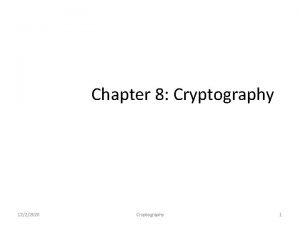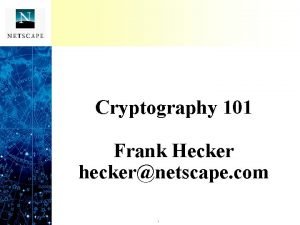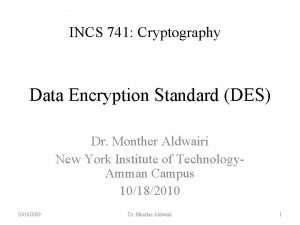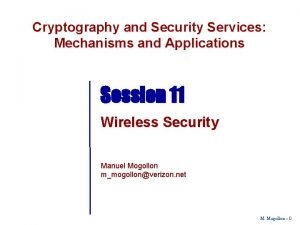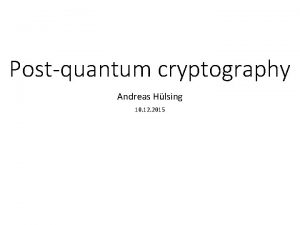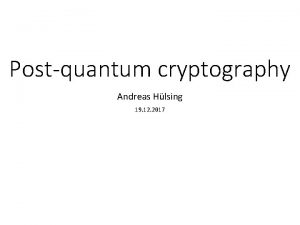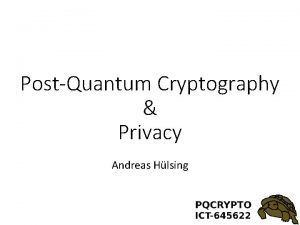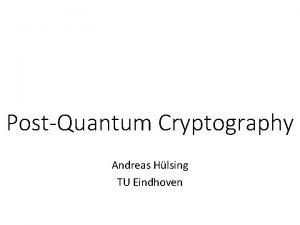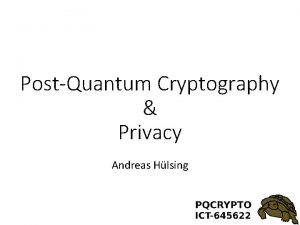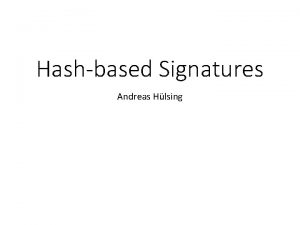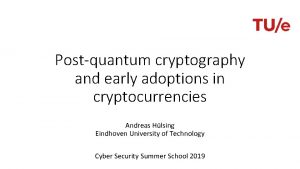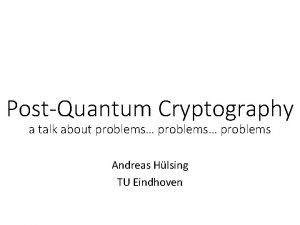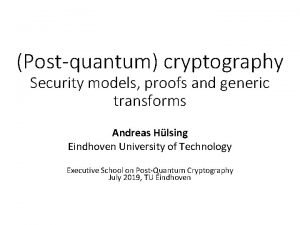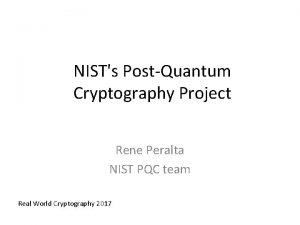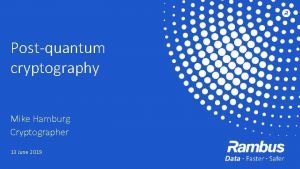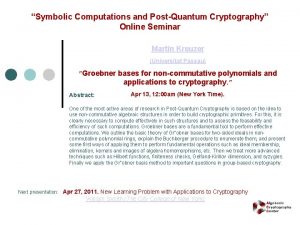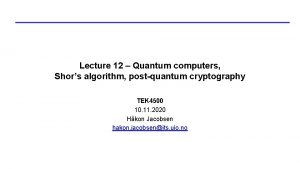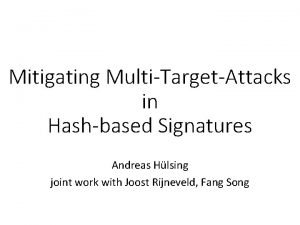Postquantum cryptography Andreas Hlsing 19 12 2017 Todays





































![Hash-based Signature Schemes [Mer 89] Post quantum Only secure hash function Security well understood Hash-based Signature Schemes [Mer 89] Post quantum Only secure hash function Security well understood](https://slidetodoc.com/presentation_image_h2/5f4df18f8375ca3f5786b335c7f4c2ea/image-38.jpg)










![Lamport-Diffie OTS [Lam 79] Message M = b 1, …, bm, OWF H SK Lamport-Diffie OTS [Lam 79] Message M = b 1, …, bm, OWF H SK](https://slidetodoc.com/presentation_image_h2/5f4df18f8375ca3f5786b335c7f4c2ea/image-49.jpg)











![Recap LD-OTS [Lam 79] Message M = b 1, …, bm, OWF H SK Recap LD-OTS [Lam 79] Message M = b 1, …, bm, OWF H SK](https://slidetodoc.com/presentation_image_h2/5f4df18f8375ca3f5786b335c7f4c2ea/image-61.jpg)


















![HORS [RR 02] * Message M, OWF H, CRHF H’ = n bit Parameters HORS [RR 02] * Message M, OWF H, CRHF H’ = n bit Parameters](https://slidetodoc.com/presentation_image_h2/5f4df18f8375ca3f5786b335c7f4c2ea/image-80.jpg)







- Slides: 87

Post-quantum cryptography Andreas Hülsing 19. 12. 2017

Today‘s Crypto-Eco-System Public key cryptography: • Deployed schemes are based on RSA- and discrete logarithm problem (incl. ECC, DH. . . ). Secret key / Symmetric cryptography: • Wide range of different schemes. • Not based on „hard problems“, rather on „design principles“

Today‘s Crypto-Eco-System • We need public key cryptography for almost all applications of cryptography • Remember key exchange problem • Advanced applications mostly rely on hardness of same problems

What happens if the TWO problems are solved? • No (practical) secure communication • No online payment • No e-Commerce • No Internet privacy • No private online communication • with insurance company, public institutions, etc. • With private contacts (this includes Skype, whatsapp, etc. (although these are already questionable today. . )) • Everyone in same Wi. Fi network can listen to your connection

Quantum computers • 1980 Theoretical concept • 1994 Shor‘s algorithm • 1995 First quantum gate experimentally realized • 1996 Grover‘s algorithm • 2014 Largest number factored: 56153

(Big) Players in quantum game


Quantum computing •

Quantum computing II • Restriction: To learn outcome one has to measure. • Colapses qubit to basis state • 1 qubit leads 1 classical bit of information • Randomized process • Goal: Amplify amplitude of solution vector. • Many fancy things like quantum teleportation • Not important for us

Shor‘s algorithm (1994) • Quantum computers can do FFT very efficiently • Can be used to find period of a function • This can be exploited to factor in (quantum)-poly-time • Shor also shows how to solve discrete log in (quantum)-poly-time

Shor‘s factoring algorithm – classical part •

Shor‘s factoring algorithm – classical part II •

Shor‘s factoring algorithm – classical part III •

Example •

Grover‘s algorithm •

A comment on D-Waves quantum annealing computer This is no quantum computer that breaks crypto!


Interim conclusion • Quantum computers are powerful but not almighty • Can be used to break some crypto but not all crypto: Asymmetric falls, symmetric survives • Unclear when large scale QC‘s ready • If we want to preserve privacy for more than a short time: We have to react now!

Quantum Cryptography

Why not beat ‘em with their own weapons? • QKD: Quantum Key distribution. • Based on some nice quantum properties: entanglement & collapsing measurments • Information theoretic security -> Great! • For sale today! • So why don‘t we use this? • Only short distance, point-to-point connections! • Internet? No way! • Longer distances require „trusted-repeaters“ • We all know where this leads. . . • More issues with actual implementations. . .

Post-Quantum Cryptography

Quantum-secure problems Credits: Buchmann, Bindel 2015

Conjectured quantum-secure problems • Solving multivariate quadratic equations (MQproblem) -> Multivariate Crypto • Bounded-distance decoding (BDD) -> Code-based crypto • Short(est) and close(st) vector problem (SVP, CVP) -> Lattice-based crypto • Breaking security of symmetric primitives (SHA-x-, AES-, Keccak-, . . . problem) -> Hash-based signatures / symmetric crypto

Multivariate Crypto Credits: Buchmann, Bindel 2015

MQ-Problem Credits: Buchmann, Bindel 2015

Multivariate Signatures (the traditional way) Credits: Buchmann, Bindel 2015

Multivariate Cryptography (the traditional way) •

MQ-DSS • New proposal for MQ-based signatures • Security reduction from MQ-problem in ROM • Small keys, fast, large signatures (41 k. B)

Coding-based cryptography - BDD Credits: Buchmann, Bindel 2015

Mc. Eliece PKE (1978) Credits: Buchmann, Bindel 2015

Code-based cryptography •

Lattice-based cryptography •

Shortest vector problem (SVP)

(Worst-case) Lattice Problems •

(Average-case) Lattice Problems Short Integer Solution (SIS) •

Hash function •

Lattice-based crypto • SIS: Allows to construct signature schemes, hash functions, . . . , basically minicrypt. • For more advanced applications: Learning with errors (LWE) • Allows to build PKE, IBE, FHE, . . . • Performance: Sizes can almost reach those of RSA (just small const. factor), really fast. • BUT: Exact security not well accessed, yet. Especially, no good estimate for quantum computer aided attacks.
![Hashbased Signature Schemes Mer 89 Post quantum Only secure hash function Security well understood Hash-based Signature Schemes [Mer 89] Post quantum Only secure hash function Security well understood](https://slidetodoc.com/presentation_image_h2/5f4df18f8375ca3f5786b335c7f4c2ea/image-38.jpg)
Hash-based Signature Schemes [Mer 89] Post quantum Only secure hash function Security well understood Fast 7 -6 -2021 PAGE 38

RSA – DSA – EC-DSA. . . Intractability Assumption Cryptographic hash function RSA, DH, SVP, MQ, … Digital signature scheme 7 -6 -2021 PAGE 39

(Hash) function families •

One-wayness •

Collision resistance

Second-preimage resistance •

Undetectability •

Pseudorandomness • g

Hash-function properties Assumption / Attacks stronger / easier to break Collision-Resistance 2 nd-Preimage. Resistance One-way Pseudorandom weaker / harder to break 7 -6 -2021 PAGE 46

Attacks on Hash Functions MD 5 Collisions (practical!) Collisions (theo. ) SHA-1 MD 5 & SHA-1 Collisions (theo. ) 2004 7 -6 -2021 2005 No (Second-) Preimage Attacks! 2008 2015 PAGE 47

Basic Construction 7 -6 -2021 PAGE 48
![LamportDiffie OTS Lam 79 Message M b 1 bm OWF H SK Lamport-Diffie OTS [Lam 79] Message M = b 1, …, bm, OWF H SK](https://slidetodoc.com/presentation_image_h2/5f4df18f8375ca3f5786b335c7f4c2ea/image-49.jpg)
Lamport-Diffie OTS [Lam 79] Message M = b 1, …, bm, OWF H SK sk 1, 0 sk 1, 1 H PK Sig 7 -6 -2021 skm, 0 H pk 1, 0 b 1 = n bit * H H pk 1, 1 Mux sk 1, b 1 skm, 1 H H pkm, 0 b 2 Mux bm pkm, 1 Mux skm, bm PAGE 49

EU-CMA for OTS SIGN 23. 09. 2013 | TU Darmstadt | Andreas Hülsing | 50

Security Theorem: If H is one-way then LD-OTS is one-time eu-cmasecure.

Reduction • sk 1, 0 H pk 1, 0 sk 1, 1 H pk 1, 1 skm, 0 H H H pkm, 0 skm, 1 H pkm, 1

Reduction Adv. Message: M = b 1, …, bm If bi = b return fail else return Sign(M) • sk 1, 0 H skm, 0 H pk 1, 0 b 1 ? sk 1, 1 H H pk 1, 1 Mux sk 1, b 1 skm, 1 H pkm, 0 b 2 Mux bm pkm, 1 Mux skm, bm

Reduction • sk 1, 0 H pk 1, 0 sk 1, 1 H pk 1, 1 ? skm, 0 H H pkm, 0 skm, 1 H pkm, 1

Reduction - Analysis •

Merkle’s Hash-based Signatures PK H H SIG = (i=2, , H OTS H , H H H OTS OTS 7 -6 -2021 SK PAGE 56 )

Security Theorem: MSS is eu-cma-secure if OTS is a one-time eu-cma secure signature scheme and H is a random element from a family of collision resistant hash functions.

Reduction •

Reduction (Step 4, Extraction) •

Winternitz-OTS
![Recap LDOTS Lam 79 Message M b 1 bm OWF H SK Recap LD-OTS [Lam 79] Message M = b 1, …, bm, OWF H SK](https://slidetodoc.com/presentation_image_h2/5f4df18f8375ca3f5786b335c7f4c2ea/image-61.jpg)
Recap LD-OTS [Lam 79] Message M = b 1, …, bm, OWF H SK sk 1, 0 Sig skm, 0 H pk 1, 0 b 1 = n bit sk 1, 1 H PK * H H H pk 1, 1 Mux sk 1, b 1 skm, 1 H pkm, 0 b 2 Mux bn pkm, 1 Mux skm, bm

LD-OTS in MSS SIG = (i=2, , , ) Verification: 1. Verify 2. Verify authenticity of We can do better!

Trivial Optimization Message M = b 1, …, bm, OWF H SK sk 1, 0 H PK b 1 Sig * = n bit sk 1, 1 H pk 1, 0 pk 1, 1 Mux sig 1, 0 sig 1, 1 skm, 0 H H bm skm, 1 H H pkm, 0 pkm, 1 Mux sigm, 0 sigm, 1

Optimized LD-OTS in MSS X SIG = (i=2, , , , Verification: 1. Compute from 2. Verify authenticity of Steps 1 + 2 together verify , )

Germans love their „Ordnung“! Checksum with bad performance!

Optimized LD-OTS

Function chains • c 0(x) = x

WOTS • c 0(sk 1) = sk 1 pk 1 = cw-1(sk 1) c 1(skl ) c 0(skl ) = skl pkl = cw-1(skl )

WOTS Signature generation M b 1 b 2 b 3 b 4 … … … … c 0(sk 1) = sk 1 bm‘+1 bm‘+2 … C … bl pk 1 = cw-1(sk 1) σ1=cb 1(sk 1) Signature: σ = (σ1, …, σl ) c 0(skl ) = skl pkl = cw-1(skl ) σl =cbl (skl )

WOTS Signature Verification Verifier knows: M, w b 1 b 2 b 3 b 4 … … … … bm‘+1 bl 1+2 … … bl pk 1 =? σ1 Signature: σ = (σ1, …, σl ) pkl =? σl

WOTS Function Chains •

WOTS Security •

XMSS

XMSS Tree: Uses bitmasks Leafs: Use binary tree with bitmasks OTS: WOTS+ Mesage digest: Randomized hashing Collision-resilient -> signature size halved bi

Multi-Tree XMSS •

How to Eliminate the State

Protest? PAGE 78 7 -6 -2021

Few-Time Signature Schemes 7 -6 -2021 PAGE 79

Recap LD-OTS Message M = b 1, …, bn, OWF H SK sk 1, 0 sk 1, 1 H PK Sig 7 -6 -2021 skn, 0 H pk 1, 0 b 1 = n bit * H H H pk 1, 1 Mux sk 1, b 1 skn, 1 H pkn, 0 b 2 Mux bn pkn, 1 Mux skn, bn PAGE 80
![HORS RR 02 Message M OWF H CRHF H n bit Parameters HORS [RR 02] * Message M, OWF H, CRHF H’ = n bit Parameters](https://slidetodoc.com/presentation_image_h2/5f4df18f8375ca3f5786b335c7f4c2ea/image-80.jpg)
HORS [RR 02] * Message M, OWF H, CRHF H’ = n bit Parameters t=2 a, k, with m = ka (typical a=16, k=32) SK sk 1 sk 2 H PK 7 -6 -2021 pk 1 skt-1 H pk 1 H H skt H pkt-1 H pkt PAGE 81

HORS mapping function * Message M, OWF H, CRHF H’ = n bit Parameters t=2 a, k, with m = ka (typical a=16, k=32) M H’ b 1 b 2 ba i 1 7 -6 -2021 bar ik PAGE 82

HORS * Message M, OWF H, CRHF H’ = n bit Parameters t=2 a, k, with m = ka (typical a=16, k=32) SK sk 1 sk 2 H PK H’(M) H pk 1 b 1 H H b 2 skt H pk 1 H pkt-1 ba i 1 7 -6 -2021 skt-1 ba+1 pkt bka-2 bka-1 Mux ski 1 skik ik PAGE 83 bka

HORS Security • 7 -6 -2021 PAGE 84

HORST Using HORS with MSS requires adding PK (tn) to MSS signature. HORST: Merkle Tree on top of HORS-PK • New PK = Root • Publish Authentication Paths for HORS signature values • PK can be computed from Sig • With optimizations: tn → (k(log t − x + 1) + 2 x)n • E. g. SPHINCS-256: 2 MB → 16 KB • Use randomized message hash 7 -6 -2021 PAGE 85

SPHINCS • Stateless Scheme • XMSSMT + HORST + (pseudo-)random index • Collision-resilient • Deterministic signing • SPHINCS-256: • • 128 -bit post-quantum secure Hundrest of signatures / sec 41 kb signature 1 kb keys

PQ-Crypto is currently a hot topic

Thank you! Questions? For references & further literature see https: //huelsing. wordpress. com/hash-based-signature-schemes/literature/ 7 -6 -2021 PAGE 88
 Hlsing
Hlsing Hlsing
Hlsing Hlsing
Hlsing Hlsing
Hlsing Hlsing
Hlsing Hlsing
Hlsing Hlsing
Hlsing Hlsing
Hlsing Hlsing
Hlsing Hlsing
Hlsing Cvp
Cvp Hlsing
Hlsing Hlsing
Hlsing Todays jeopardy
Todays jeopardy Safe online talk
Safe online talk Generations
Generations Todays objective
Todays objective Todays health
Todays health Todays globl
Todays globl Todays class com
Todays class com Todays science
Todays science Todays objective
Todays objective Todays whether
Todays whether Planetary positions today
Planetary positions today Todays sabbath lesson
Todays sabbath lesson Organelle that modifies packages and transports
Organelle that modifies packages and transports Multiple choice comma quiz
Multiple choice comma quiz Todays class
Todays class Objective for cv
Objective for cv Teacher good morning student student
Teacher good morning student student Todays weather hull
Todays weather hull There is class today
There is class today Todays objective
Todays objective Whats todays temperature
Whats todays temperature Whats todays wordlw
Whats todays wordlw Judith kuster
Judith kuster Todays objective
Todays objective Conclusion of digestive system
Conclusion of digestive system Mla cover page format
Mla cover page format Welcome for sabbath school
Welcome for sabbath school Todays objective
Todays objective Todays worldld
Todays worldld Today's public relations departments
Today's public relations departments Todays agenda
Todays agenda Todays jeopardy
Todays jeopardy Todays objective
Todays objective Todays vision
Todays vision No thats not it
No thats not it Geographic regions final jeopardy
Geographic regions final jeopardy Todays jeopardy
Todays jeopardy Chapter 13 marketing in today's world worksheet answers
Chapter 13 marketing in today's world worksheet answers For today's meeting
For today's meeting Todays objective
Todays objective Todays final jeopardy answer
Todays final jeopardy answer Todays final jeopardy question
Todays final jeopardy question Todays match
Todays match Whats todays temperature
Whats todays temperature Todays price of asda shares
Todays price of asda shares Todays software
Todays software Wat is todays date
Wat is todays date Todays objective
Todays objective Todays objective
Todays objective Todays plan
Todays plan Todays concept
Todays concept Todays lab
Todays lab Rprefer
Rprefer Cryptography william stallings
Cryptography william stallings Study cryptography
Study cryptography Algebra and cryptography
Algebra and cryptography Motivationsbasis
Motivationsbasis Wireless security in cryptography
Wireless security in cryptography Evolution of cryptography
Evolution of cryptography What is key management in cryptography
What is key management in cryptography Public key cryptography principles
Public key cryptography principles Intruders in network security
Intruders in network security What are cryptography and cryptanalysis
What are cryptography and cryptanalysis New directions in cryptography
New directions in cryptography Approaches to message authentication
Approaches to message authentication Obfuscation cryptography
Obfuscation cryptography Finite fields in cryptography
Finite fields in cryptography What is cryptography
What is cryptography Hill cipher
Hill cipher Firewall base layer
Firewall base layer Cryptography 101
Cryptography 101 A murder has been committed
A murder has been committed Des cryptography
Des cryptography Cryptography security services
Cryptography security services Cryptography and network security pearson
Cryptography and network security pearson
